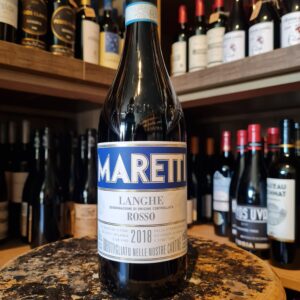-
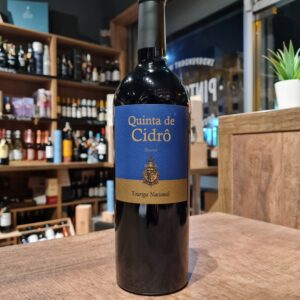 I have been chasing a 100% Touriga Nacional for a while now, with some disappointments in the middle. Mostly due to knowing the full potential of Touriga Nacional and what can be done with it. Was loosing faith(Poor supplier offering in Ireland) and was actively looking to import myself a few options until I stumbled upon this gem. This wine is the example where no one should judge a book by its cover. Across all Companhia Velha Wines the labels are just minimal, classy but not in the way you would think. Has a bit of I don't give a damn about them and that subtlety actually impresses me even further. No distractions to be added here!!! Bear in mind this winery was one of the first if not the first Wine family business(1756) in the Douro Valley(1763) and it was full integrated when it became the first official wine region in the world. Quinta de Cidrô is located at São João da Pesqueira, which is one of the most highly regarded areas of Douro Valley. Throughout the last 20 years, Cidrô has been transformed into an experimental-model vineyard for the entire region. In virgin soils, cutting edge techniques were employed to plant 150 ha of the best varieties, creating one of the largest surfaces of single vineyard in the entire Douro Region. In the most privileged location, international varieties perform equally well as the local grapes. Chardonnay, Sauvignon Blanc, Viognier, Pinot Noir, and the adaptable Cabernet Sauvignon are some of the foreign varieties that here express their best qualities when vinified by the extensive winemaking know-how present at the Company. Touriga Nacional is Portugal’s star variety and the dominant red grape at Quinta de Cidrô. The altitude of this Quinta provides excellent freshness and levels of acidity, ideal conditions for an elegant red wine. Touriga Nacional is a versatile grape, with its main characteristics being the small bundle, its low yield and jagged leaf. Its presence in the vines is intimidating, as it requires a constant care for its wild and rebellious character of growing disorderly. At Quinta de Cidrô, Touriga Nacional was adapted to a less habitual place, as it was mostly planted in low altitude vineyards and subject to high temperatures; the opposite of Quinta de Cidrô. Personally I love it on its own with at least 45 minutes decanting or enjoy really slow the very first drop. Winemakers suggestion for this stunning wine are: Rump Steak, Pork Leg, Parmigiano Cheese and Dark Chocolate.
I have been chasing a 100% Touriga Nacional for a while now, with some disappointments in the middle. Mostly due to knowing the full potential of Touriga Nacional and what can be done with it. Was loosing faith(Poor supplier offering in Ireland) and was actively looking to import myself a few options until I stumbled upon this gem. This wine is the example where no one should judge a book by its cover. Across all Companhia Velha Wines the labels are just minimal, classy but not in the way you would think. Has a bit of I don't give a damn about them and that subtlety actually impresses me even further. No distractions to be added here!!! Bear in mind this winery was one of the first if not the first Wine family business(1756) in the Douro Valley(1763) and it was full integrated when it became the first official wine region in the world. Quinta de Cidrô is located at São João da Pesqueira, which is one of the most highly regarded areas of Douro Valley. Throughout the last 20 years, Cidrô has been transformed into an experimental-model vineyard for the entire region. In virgin soils, cutting edge techniques were employed to plant 150 ha of the best varieties, creating one of the largest surfaces of single vineyard in the entire Douro Region. In the most privileged location, international varieties perform equally well as the local grapes. Chardonnay, Sauvignon Blanc, Viognier, Pinot Noir, and the adaptable Cabernet Sauvignon are some of the foreign varieties that here express their best qualities when vinified by the extensive winemaking know-how present at the Company. Touriga Nacional is Portugal’s star variety and the dominant red grape at Quinta de Cidrô. The altitude of this Quinta provides excellent freshness and levels of acidity, ideal conditions for an elegant red wine. Touriga Nacional is a versatile grape, with its main characteristics being the small bundle, its low yield and jagged leaf. Its presence in the vines is intimidating, as it requires a constant care for its wild and rebellious character of growing disorderly. At Quinta de Cidrô, Touriga Nacional was adapted to a less habitual place, as it was mostly planted in low altitude vineyards and subject to high temperatures; the opposite of Quinta de Cidrô. Personally I love it on its own with at least 45 minutes decanting or enjoy really slow the very first drop. Winemakers suggestion for this stunning wine are: Rump Steak, Pork Leg, Parmigiano Cheese and Dark Chocolate. -
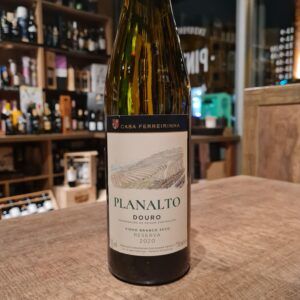 Planalto is one of the biggest references of white wine in the Douro Demarcated Region, fruit of the in-depth studies carried out over the years, the careful choice of the grape varieties that compose it and the use of the best winemaking technology in its production. This white blend comes from high-altitude vineyards above the river Douro. The soil in the Douro Valley is schistous; a slate-like metamorphic rock that fractures vertically - allowing vine roots to dig deep to access water and nutrients to sustain them through the hot Douro summers. The poor quality of the soil forces the grapes to produce low yields of grapes with a great concentration of flavour. The grapes were harvested by hand and were selected for their balance between flavour intensity and freshness. Ideal to accompany fish, seafood and white meat dishes.
Planalto is one of the biggest references of white wine in the Douro Demarcated Region, fruit of the in-depth studies carried out over the years, the careful choice of the grape varieties that compose it and the use of the best winemaking technology in its production. This white blend comes from high-altitude vineyards above the river Douro. The soil in the Douro Valley is schistous; a slate-like metamorphic rock that fractures vertically - allowing vine roots to dig deep to access water and nutrients to sustain them through the hot Douro summers. The poor quality of the soil forces the grapes to produce low yields of grapes with a great concentration of flavour. The grapes were harvested by hand and were selected for their balance between flavour intensity and freshness. Ideal to accompany fish, seafood and white meat dishes. -
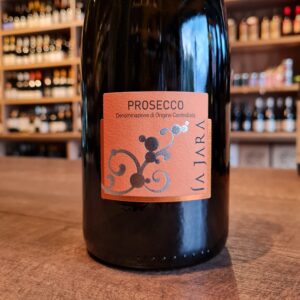 La Jara, based in the heart of Prosecco country just south of Conegliano, make a superb range of organic wines including some excellent Proseccos such as this. Being a frizzante it's got a soft sparkle and in some ways helps the fruit character stand out that bit more. With masses of fine bubbles and flavours of apple, peach, pear and ripe citrus fruits it's a very approachable style that's perhaps a bit too easy to drink. Certainly a step above a lot of other Proseccos. It's freshness makes it a great 'anytime' fizz. It's also really good alongside nibbles like olives, or tortilla chips and dips.
La Jara, based in the heart of Prosecco country just south of Conegliano, make a superb range of organic wines including some excellent Proseccos such as this. Being a frizzante it's got a soft sparkle and in some ways helps the fruit character stand out that bit more. With masses of fine bubbles and flavours of apple, peach, pear and ripe citrus fruits it's a very approachable style that's perhaps a bit too easy to drink. Certainly a step above a lot of other Proseccos. It's freshness makes it a great 'anytime' fizz. It's also really good alongside nibbles like olives, or tortilla chips and dips. -
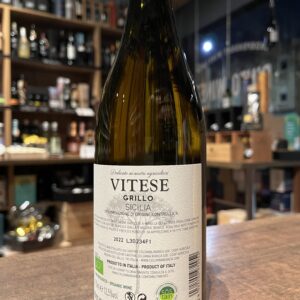
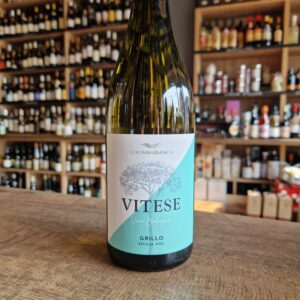 The Colomba Bianca winery was founded in 1970. During the last 10 years, under the guidance of our Chairman Leonardo Taschetta, it has become the biggest wine growing co-operative in Sicily. The company today, can, in fact, count on circa 2480 partners and extends along 7500 hectars of vineyards between the provinces of Trapani, Palermo, Agrigento, Caltanissetta e Ragusa, with 5 wineries distributed in the whole territory. The vineyards can be found in areas which benefit of a vast pedoclimatic diversity, from the low coastal areas up to an altitude of 600 metres above sea level. "We work with the aim that our farmers receive the right compensation for their work. This adds dignity to Sicilian agriculture and to the wines which express at best our territory. It is for this reason that each one of our wines is dedicated to our farmers." - Colomba Bianco Grillo is the flagship of Sicily's indigenous white varieties. Famous for its role in the production of Marsala wines, but has recently come into its own as a varietal making light, fresh and citrussy wines. Ideal with fish first courses, delicate risottos and white meat dishes.
The Colomba Bianca winery was founded in 1970. During the last 10 years, under the guidance of our Chairman Leonardo Taschetta, it has become the biggest wine growing co-operative in Sicily. The company today, can, in fact, count on circa 2480 partners and extends along 7500 hectars of vineyards between the provinces of Trapani, Palermo, Agrigento, Caltanissetta e Ragusa, with 5 wineries distributed in the whole territory. The vineyards can be found in areas which benefit of a vast pedoclimatic diversity, from the low coastal areas up to an altitude of 600 metres above sea level. "We work with the aim that our farmers receive the right compensation for their work. This adds dignity to Sicilian agriculture and to the wines which express at best our territory. It is for this reason that each one of our wines is dedicated to our farmers." - Colomba Bianco Grillo is the flagship of Sicily's indigenous white varieties. Famous for its role in the production of Marsala wines, but has recently come into its own as a varietal making light, fresh and citrussy wines. Ideal with fish first courses, delicate risottos and white meat dishes. -
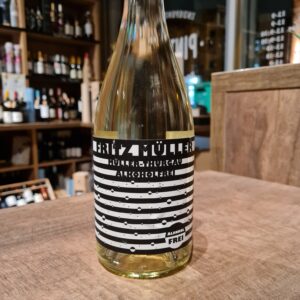 Non-alcoholic wine born in 2009 from a bubbly guy with old roots and modern tastes. Invariably well-dressed, he captures the world’s attention with his ranges of Non-Alcoholic wines in Frizzante style. Guido Walter and Jürgen Hofmann put their heads together. The German answer to frizzante had to be fresh and fruity, uncomplicated and affordable. A semi-sparkling wine that begins a carefree evening and lets you continue dancing late into the night. What began as an experimental small edition soon spread its wings and took flight. Suddenly it could be found at every party and could be seen winning design awards and notes of good taste. Everyone wants Fritz Müller. Refreshing, fizzy and frivolous: completely uncomplicated, the non-alcoholic Fritz Müller offers light-footed fun and fruity enjoyment. Vinified from the same grapes as the Fritz Müller semi-sparkling wine, this version entices sipping one or two glasses more without regret the next day. Wonderfully pure, it is best enjoyed chilled to 8°C, or as an ingredient in virgin cocktails. Guilt-free wine ;)
Non-alcoholic wine born in 2009 from a bubbly guy with old roots and modern tastes. Invariably well-dressed, he captures the world’s attention with his ranges of Non-Alcoholic wines in Frizzante style. Guido Walter and Jürgen Hofmann put their heads together. The German answer to frizzante had to be fresh and fruity, uncomplicated and affordable. A semi-sparkling wine that begins a carefree evening and lets you continue dancing late into the night. What began as an experimental small edition soon spread its wings and took flight. Suddenly it could be found at every party and could be seen winning design awards and notes of good taste. Everyone wants Fritz Müller. Refreshing, fizzy and frivolous: completely uncomplicated, the non-alcoholic Fritz Müller offers light-footed fun and fruity enjoyment. Vinified from the same grapes as the Fritz Müller semi-sparkling wine, this version entices sipping one or two glasses more without regret the next day. Wonderfully pure, it is best enjoyed chilled to 8°C, or as an ingredient in virgin cocktails. Guilt-free wine ;) -
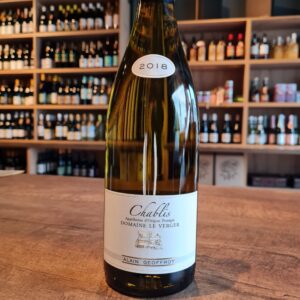 Domaine Le Verger Chablis is light gold, pronounced white flowers, mingled with an array of tropical and sweet stone fruit on the nose. The palate opens full and round, with pineapple, apricot and hints of grapefruit, hints of vegetal and lively minerality finishing fresh with great structure and dry. An excellent Chardonnay that should not be over-chilled, please allow to-open and would be best served with oysters, shellfish in general, grilled fish and even chicken. A classic Chablis at an affordable price!
Domaine Le Verger Chablis is light gold, pronounced white flowers, mingled with an array of tropical and sweet stone fruit on the nose. The palate opens full and round, with pineapple, apricot and hints of grapefruit, hints of vegetal and lively minerality finishing fresh with great structure and dry. An excellent Chardonnay that should not be over-chilled, please allow to-open and would be best served with oysters, shellfish in general, grilled fish and even chicken. A classic Chablis at an affordable price! -
 The Le Rime appears pale yellow with green highlights, with intense aromas of green fruit followed by zippy citrus on the nose. The palate is fresh and lively with ripe pear and juicy green apple in abundance, finishing clean and full with persistent fruit and citrus cream, particularly fetching but do not overchill and allow to open in the glass. Best consumed young and would be ideal with fresh fish and summer salads.
The Le Rime appears pale yellow with green highlights, with intense aromas of green fruit followed by zippy citrus on the nose. The palate is fresh and lively with ripe pear and juicy green apple in abundance, finishing clean and full with persistent fruit and citrus cream, particularly fetching but do not overchill and allow to open in the glass. Best consumed young and would be ideal with fresh fish and summer salads. -
Out of stock
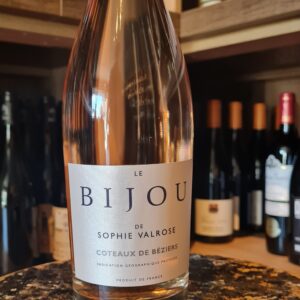 Le Bijou de Sophie Valrose is named after a lady who worked in the Languedoc vineyards during the late 19th century and became something of a local hero. At the time, it was largely women who worked in the vineyards; pruning and harvesting the vines. Sadly these women were often mistreated, overworked and underpaid. Sophie fought for women’s rights and drastically improved the conditions for her fellow female workers in the vineyard in which she worked. Bijou is a tribute to her memory and we share her story on the back of every bottle sold. The grapes are sourced from low-yielding old vines on the sloping hillsides of various vineyards in the Languedoc-Roussillon region of southern France. The areas are made up of old volcanic soils composed of 70% schist, which helps create high-quality grapes with great structure and freshness.Bijou’s flagship wine, a beautiful pale salmon coloured rosé. Elegantly fragrant, with aromas of wild strawberries, citrus and delicate floral notes. Round and creamy on the palate, with ripe red berry flavours and a soft minerality. Elegant and balanced with refreshing acidity and a silky smooth finish. The perfect accompaniment to canapés, white meats, fish and salads.
Le Bijou de Sophie Valrose is named after a lady who worked in the Languedoc vineyards during the late 19th century and became something of a local hero. At the time, it was largely women who worked in the vineyards; pruning and harvesting the vines. Sadly these women were often mistreated, overworked and underpaid. Sophie fought for women’s rights and drastically improved the conditions for her fellow female workers in the vineyard in which she worked. Bijou is a tribute to her memory and we share her story on the back of every bottle sold. The grapes are sourced from low-yielding old vines on the sloping hillsides of various vineyards in the Languedoc-Roussillon region of southern France. The areas are made up of old volcanic soils composed of 70% schist, which helps create high-quality grapes with great structure and freshness.Bijou’s flagship wine, a beautiful pale salmon coloured rosé. Elegantly fragrant, with aromas of wild strawberries, citrus and delicate floral notes. Round and creamy on the palate, with ripe red berry flavours and a soft minerality. Elegant and balanced with refreshing acidity and a silky smooth finish. The perfect accompaniment to canapés, white meats, fish and salads. -
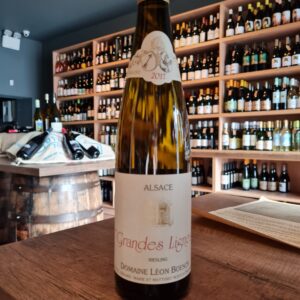 The Boesch domaine is located within the Vallèe Noble, in the “Ballons des Vosges” natural park. A magical place, surrounded by splendid vineyards at the foot of the two highest mountains of the Vosges range. The Boesch family has lived there and worked the land since 1640. 25 year old biodynamic vines planted in a limestone and sandstone-clay soil on an east facing hillside give this delicious wine. This wine is the subject of evident care: ploughing, natural treatments, and the vines are fertilized with compost produced on the estate. The harvest, the highlight of the year, is carried out exclusively by hand, and fermentation takes place with indigenous yeasts in oak casks. The nose is characterized by rhubarb, apricot, anise and gingerbread. On the palate it is very clean. Definitely a great Riesling.
The Boesch domaine is located within the Vallèe Noble, in the “Ballons des Vosges” natural park. A magical place, surrounded by splendid vineyards at the foot of the two highest mountains of the Vosges range. The Boesch family has lived there and worked the land since 1640. 25 year old biodynamic vines planted in a limestone and sandstone-clay soil on an east facing hillside give this delicious wine. This wine is the subject of evident care: ploughing, natural treatments, and the vines are fertilized with compost produced on the estate. The harvest, the highlight of the year, is carried out exclusively by hand, and fermentation takes place with indigenous yeasts in oak casks. The nose is characterized by rhubarb, apricot, anise and gingerbread. On the palate it is very clean. Definitely a great Riesling. -
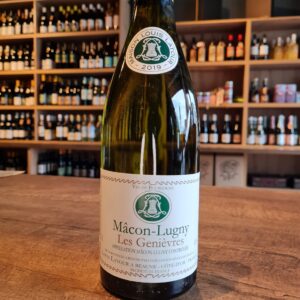 This Macon Lugny Les Genièvres has beautiful aromas of white fruit, muscat, as well as some peppery notes. This is a delicious wine with a round and full mouth(unoaked), it shows distinctive aromas of white fruit, laced with floral notes. Ideal with grilled fish, seafood and Comté cheese. The village of Lugny is located high up in the South of the Mâcon region. It has a great reputation for its white wines which has made Mâcon famous. It is well known that the village of Lugny, with its limestone soils and warm climate, produces the most coveted white wines of the region. The vineyard of « Les Genièvres » is one of the best. Maison Louis Latour selects the best grapes of this village, which thanks to its terroir, was the only village planted with Chardonnay 30 years ago.
This Macon Lugny Les Genièvres has beautiful aromas of white fruit, muscat, as well as some peppery notes. This is a delicious wine with a round and full mouth(unoaked), it shows distinctive aromas of white fruit, laced with floral notes. Ideal with grilled fish, seafood and Comté cheese. The village of Lugny is located high up in the South of the Mâcon region. It has a great reputation for its white wines which has made Mâcon famous. It is well known that the village of Lugny, with its limestone soils and warm climate, produces the most coveted white wines of the region. The vineyard of « Les Genièvres » is one of the best. Maison Louis Latour selects the best grapes of this village, which thanks to its terroir, was the only village planted with Chardonnay 30 years ago. -
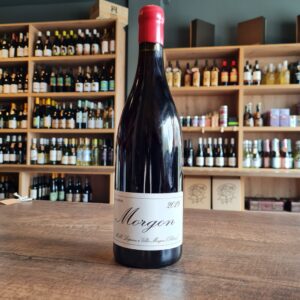 Domaine Marcel Lapierre Morgon is a natural red wine made by Domaine Marcel Lapierre with the Gamay variety in the AOC Morgon (Burgundy). Domaine Marcel Lapierre is one of the pioneer wineries that has been making natural wines since Marcel Lapierre, a true pacesetter among Beaujolais producers, took over the Villié-Morgon estate in 1973. With his work philosophy, he was committed to combining traditional best practices with new technologies so that his wines would be a true reflection of the landscape. In 1981, under the strong influence of natural wine master Jules Chavet, Marcel was among the first to produce wines of minimal intervention, without adding SO2 or any other substance. Domaine Marcel Lapierre Morgon 2018 is a fruity red wine with aromas of cherry, violet and liquorice, covered with a forest freshness and refreshing balsamic tones. On the palate it is structured, fresh and sweet. It begins with a sharp acidity that blends with the touches of fruit and liquorice and the intense minerality. This is a refreshing red, perfect for spring and summer; recommended to drink with charcuterie, paté, cheese, roast ham, roast lamb, roast chicken and turkey and with spicy Thai and Chinese dishes. Serve at the lower end of the suggested temperature range if you like your light red wines served cooler like the French
Domaine Marcel Lapierre Morgon is a natural red wine made by Domaine Marcel Lapierre with the Gamay variety in the AOC Morgon (Burgundy). Domaine Marcel Lapierre is one of the pioneer wineries that has been making natural wines since Marcel Lapierre, a true pacesetter among Beaujolais producers, took over the Villié-Morgon estate in 1973. With his work philosophy, he was committed to combining traditional best practices with new technologies so that his wines would be a true reflection of the landscape. In 1981, under the strong influence of natural wine master Jules Chavet, Marcel was among the first to produce wines of minimal intervention, without adding SO2 or any other substance. Domaine Marcel Lapierre Morgon 2018 is a fruity red wine with aromas of cherry, violet and liquorice, covered with a forest freshness and refreshing balsamic tones. On the palate it is structured, fresh and sweet. It begins with a sharp acidity that blends with the touches of fruit and liquorice and the intense minerality. This is a refreshing red, perfect for spring and summer; recommended to drink with charcuterie, paté, cheese, roast ham, roast lamb, roast chicken and turkey and with spicy Thai and Chinese dishes. Serve at the lower end of the suggested temperature range if you like your light red wines served cooler like the French -
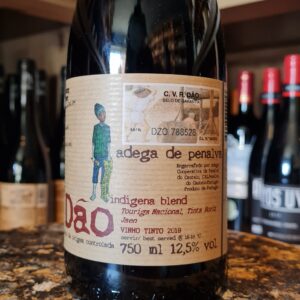 Adega de Penalva wines are delicious everyday examples of one of Portugal’s most intriguing appellations — the Dão. Perched above the Dão river itself as it snakes through its granite valleys, the Adega de Penalva is one of the leading cooperatives in the area, boasting around a thousand member growers. It’s important to note, though, that the average holding per member amounts to barely over a hectare—a figure that reminds us how tenaciously much of rural Portugal clings to its old ways. (On that note, all fruit destined for the ‘Indigena’ bottlings is hand-harvested.) Since its founding in the 1960s, the Adega has been collecting its members’ grapes and producing clean, characterful wines with a minimum of fuss that showcase real regional typicity while remaining extremely attractively priced. Adega de Penalva Indigena Dao Tinto is made with 40% Touriga Nacional, 30% Tinta Roriz (Tempranillo), and 30% Jaen (Mencía). Hand-harvested, fully destemmed and aged in a combination of stainless steel and concrete tank. Aromas of leather and blueberries lead to a palate full of dark fruits with cherry and raspberry notes. Pairs well with beef and lamb.
Adega de Penalva wines are delicious everyday examples of one of Portugal’s most intriguing appellations — the Dão. Perched above the Dão river itself as it snakes through its granite valleys, the Adega de Penalva is one of the leading cooperatives in the area, boasting around a thousand member growers. It’s important to note, though, that the average holding per member amounts to barely over a hectare—a figure that reminds us how tenaciously much of rural Portugal clings to its old ways. (On that note, all fruit destined for the ‘Indigena’ bottlings is hand-harvested.) Since its founding in the 1960s, the Adega has been collecting its members’ grapes and producing clean, characterful wines with a minimum of fuss that showcase real regional typicity while remaining extremely attractively priced. Adega de Penalva Indigena Dao Tinto is made with 40% Touriga Nacional, 30% Tinta Roriz (Tempranillo), and 30% Jaen (Mencía). Hand-harvested, fully destemmed and aged in a combination of stainless steel and concrete tank. Aromas of leather and blueberries lead to a palate full of dark fruits with cherry and raspberry notes. Pairs well with beef and lamb. -
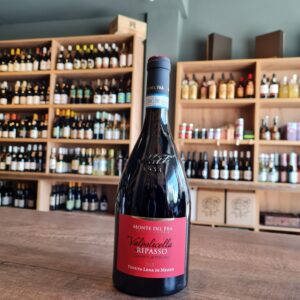 The Monte del Fra Valpolicella Classico appears deep ruby red with ripe red fruit accompanied with spice and earthiness on the nose. The palate displays delicious cherry and plum fruit, locked with sweet liquorice and warm cinnamon, finishing full, with velvety soft tannins and spice. Excellent wine that will get better and better, allow to breathe, even decant and would be best served with roasts, stews, braised meats and strong cheese.
The Monte del Fra Valpolicella Classico appears deep ruby red with ripe red fruit accompanied with spice and earthiness on the nose. The palate displays delicious cherry and plum fruit, locked with sweet liquorice and warm cinnamon, finishing full, with velvety soft tannins and spice. Excellent wine that will get better and better, allow to breathe, even decant and would be best served with roasts, stews, braised meats and strong cheese. -
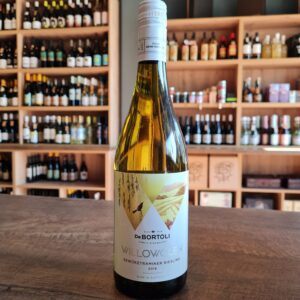 Vegan Gewurztraminer/ Riesling blend. Rose petal aromas with a hint of spice and fresh citrus. The palate is sweet, with rosewater Traminer characters complemented by the Riesling adding a citrus freshness. Try with spicy pork buns or if you're adventurous, venison salad with Thai herbs or spicy food in general. Did I mention this wine is Vegan?
Vegan Gewurztraminer/ Riesling blend. Rose petal aromas with a hint of spice and fresh citrus. The palate is sweet, with rosewater Traminer characters complemented by the Riesling adding a citrus freshness. Try with spicy pork buns or if you're adventurous, venison salad with Thai herbs or spicy food in general. Did I mention this wine is Vegan? -
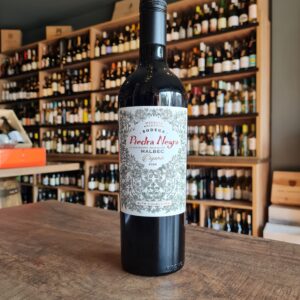 François Lurton vineyards are situated in the highlands (1,100 m) and semi-desert (poor alluvial gravels reminiscent of those of Pessac-Léognan), in the plains at the foot of the mountain range of the Andes: the Uco Valley. Thanks to his experience, acquired all over the world, he practices an environmentally friendly viticulture and produces extraordinary wines here that have a unique personality that combines freshness and concentration. Thanks to the climatic conditions of this high altitude desert and very draining and not very fertile alluvial gravel soils, the wines of the Uco Valley, and especially those of Los Chacayes, are quite unique and François Lurton vision was a success. This Malbec has a an outstanding quality/price ratio and it is definitely a contender not only for those summer barbecues but also for those cold winter nights. Pair it with Carpaccio, Paella, Iberian ham, red pepper stuffed with cheese and Hummus.
François Lurton vineyards are situated in the highlands (1,100 m) and semi-desert (poor alluvial gravels reminiscent of those of Pessac-Léognan), in the plains at the foot of the mountain range of the Andes: the Uco Valley. Thanks to his experience, acquired all over the world, he practices an environmentally friendly viticulture and produces extraordinary wines here that have a unique personality that combines freshness and concentration. Thanks to the climatic conditions of this high altitude desert and very draining and not very fertile alluvial gravel soils, the wines of the Uco Valley, and especially those of Los Chacayes, are quite unique and François Lurton vision was a success. This Malbec has a an outstanding quality/price ratio and it is definitely a contender not only for those summer barbecues but also for those cold winter nights. Pair it with Carpaccio, Paella, Iberian ham, red pepper stuffed with cheese and Hummus. -
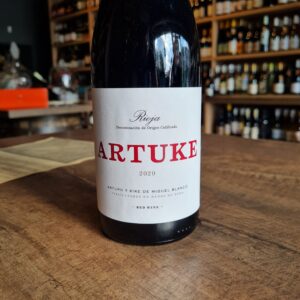 Made in a Beaujolais style, with the carbonic maceration method. This juicy ''Joven'' fresh fruited style of Rioja has zero oak influence as it ages in concrete tanks for 6 months. Farmed without any synthetic fertilizers or pesticides. Arturo Blanco was once asked what the philosophy at Bodegas Artuke was and he simply replied 'we are farmers'. The approach here is 100% focused on interpreting the family's 32 plots which are split between the villages of Baños de Ebro and Ábalos in Rioja Alavesa. Biodynamic techniques are employed in the vineyards and Arturo and Kike are also busy recovering old, ignored plots of ancient vines. Vinification is aimed at expressing the characteristics of the vineyard and quality of fruit above all else. The restrained use of oak and inclination towards different types/sizes of barrel, plus an unwillingness to adhere to the subscribed regimes for classification means that Artuke are precluded from using Crianza, Reserva and Gran Reserva designations on their wines. This mouth-watering red wine takes a relatively deep chill which makes it a versatile pairing with all types of food: tuna, pretty much anything made with zucchini, fried chicken, gooey cheese sandwiches, pizza, etc…
Made in a Beaujolais style, with the carbonic maceration method. This juicy ''Joven'' fresh fruited style of Rioja has zero oak influence as it ages in concrete tanks for 6 months. Farmed without any synthetic fertilizers or pesticides. Arturo Blanco was once asked what the philosophy at Bodegas Artuke was and he simply replied 'we are farmers'. The approach here is 100% focused on interpreting the family's 32 plots which are split between the villages of Baños de Ebro and Ábalos in Rioja Alavesa. Biodynamic techniques are employed in the vineyards and Arturo and Kike are also busy recovering old, ignored plots of ancient vines. Vinification is aimed at expressing the characteristics of the vineyard and quality of fruit above all else. The restrained use of oak and inclination towards different types/sizes of barrel, plus an unwillingness to adhere to the subscribed regimes for classification means that Artuke are precluded from using Crianza, Reserva and Gran Reserva designations on their wines. This mouth-watering red wine takes a relatively deep chill which makes it a versatile pairing with all types of food: tuna, pretty much anything made with zucchini, fried chicken, gooey cheese sandwiches, pizza, etc… -
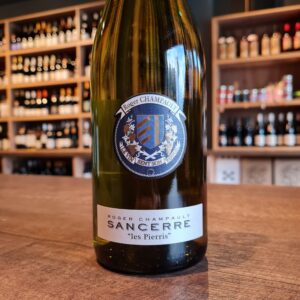 Five generations of traditional winemaking from the estate of Roger Champault, modern thermoregulation techniques, and carefully chosen soil matching, have produced a Cuvee that is subtle at first, like the rising of a summer breeze, building in its complexity with wispy herbal notes and abundant florals that dance across the taste buds like wind through an apple orchard. Delicate, yet so very alive. This wine drinks with a lovely, masterfully structured liveliness and sweet, concentrated finish.Thanks to its abundant fruitiness, it is suitable not only for seafood and crabs but also for more abundant fish dishes; fried salmon, pike perch etc. Also suitable for light meat, especially poultry dishes.Curious note, Sancerre Les Pierris 2008 wine was served at the wedding dinner of Princess Victoria and Daniel of Sweden.
Five generations of traditional winemaking from the estate of Roger Champault, modern thermoregulation techniques, and carefully chosen soil matching, have produced a Cuvee that is subtle at first, like the rising of a summer breeze, building in its complexity with wispy herbal notes and abundant florals that dance across the taste buds like wind through an apple orchard. Delicate, yet so very alive. This wine drinks with a lovely, masterfully structured liveliness and sweet, concentrated finish.Thanks to its abundant fruitiness, it is suitable not only for seafood and crabs but also for more abundant fish dishes; fried salmon, pike perch etc. Also suitable for light meat, especially poultry dishes.Curious note, Sancerre Les Pierris 2008 wine was served at the wedding dinner of Princess Victoria and Daniel of Sweden. -
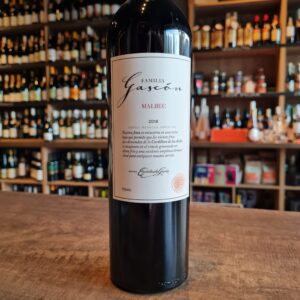 This wine is made with grapes sourced from vineyards located mainly in the Primera Zona. Influenced by the winds descending from the Andes Mountains and its lower altitude, this region is one of the coolest areas in Argentine viticulture and often suffers from late frosts during bud break. These conditions also favor great thermal amplitude. Most of the vineyards are old and traditionally irrigated, with relatively heavy and deep loamy soils. Season 2020 was marked by warmer than usual temperatures and a strong hydric crisis due to very scarce rainfall that delivered lower yields and speeded up the ripening process. These conditions followed by the outbreak of a global pandemic accelerated the harvest. Despite all the uncertainties we were able to reach an optimal ripening point that helped delivered great quality wines. Towards the end of the last century, Mr. Miguel Escorihuela Gascón, a passionate and determined visionary, created one of the most prestigious wine companies in the Republic of Argentina since 1884: Establecimientos Vitivinícolas Escorihuela. From the very beginning, his main objective was to achieve wines of the highest quality. Therefore, special attention was paid to the selection and care of grape varieties, the elaboration under traditional methods and the constant incorporation of technology, with a team of qualified Argentine professionals and the counselling of renowned foreign winemakers and technicians, which makes it possible to maintain a high level of international quality. Thus, the winery developed throughout time, succeeding in placing its products in a privileged place both in the domestic and in the global markets on a constant basis, achieving a high level of customer loyalty, with consumers adopting our wines once and for all. 100% Malbec from the Agrelo region, the wine was matured in French and American oak for 4 months. Today, after 130 years innovating in the preparation of top quality wines, Escorihuela Gascón is the leader in the creation of Premium and High End wines and is one of the 10 most important exporting wineries.
This wine is made with grapes sourced from vineyards located mainly in the Primera Zona. Influenced by the winds descending from the Andes Mountains and its lower altitude, this region is one of the coolest areas in Argentine viticulture and often suffers from late frosts during bud break. These conditions also favor great thermal amplitude. Most of the vineyards are old and traditionally irrigated, with relatively heavy and deep loamy soils. Season 2020 was marked by warmer than usual temperatures and a strong hydric crisis due to very scarce rainfall that delivered lower yields and speeded up the ripening process. These conditions followed by the outbreak of a global pandemic accelerated the harvest. Despite all the uncertainties we were able to reach an optimal ripening point that helped delivered great quality wines. Towards the end of the last century, Mr. Miguel Escorihuela Gascón, a passionate and determined visionary, created one of the most prestigious wine companies in the Republic of Argentina since 1884: Establecimientos Vitivinícolas Escorihuela. From the very beginning, his main objective was to achieve wines of the highest quality. Therefore, special attention was paid to the selection and care of grape varieties, the elaboration under traditional methods and the constant incorporation of technology, with a team of qualified Argentine professionals and the counselling of renowned foreign winemakers and technicians, which makes it possible to maintain a high level of international quality. Thus, the winery developed throughout time, succeeding in placing its products in a privileged place both in the domestic and in the global markets on a constant basis, achieving a high level of customer loyalty, with consumers adopting our wines once and for all. 100% Malbec from the Agrelo region, the wine was matured in French and American oak for 4 months. Today, after 130 years innovating in the preparation of top quality wines, Escorihuela Gascón is the leader in the creation of Premium and High End wines and is one of the 10 most important exporting wineries. -
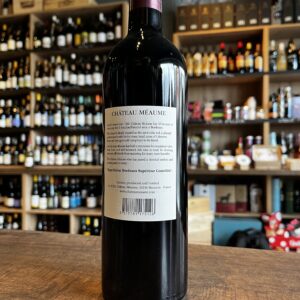
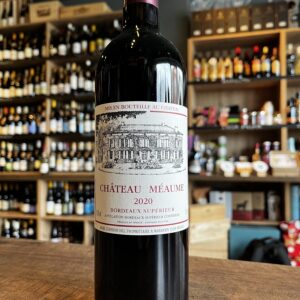 Most of us know Roald Dahl's novels, I for one have read them countless times. Firstly to my eldest and now, once in while I try with the middle one, even though he is still a bit young for those books. He is only 4 my wife says! They are just fun to read. To my surprise, after deciding to bring Château Méaume Bordeaux Supérieur to our Pinto Wines portfolio I came across that it was Roald Dahl's favourite wine and per his own words ''simply delicious''. Well I could not put it better myself. It is a fantastic wine, with superb quality at this price point and what some would call a ''Big little wine.'' Unpretentious especially being French and carries a lot with it. It has a warm, expressive black fruits with a serious, rustic, spicy structure. A hint of exotic perfume on the nose, with a luscious, very ripe blackberry and damson palate.80% merlot, with cabernets franc and sauvignon adding a rich, chewy texture. Very more-ish, with freshness, and great balance.Château Méaume, owned by English couple Alan and Sue Johnson-Hill since 1980, is an historic property just 10 miles from the famous vineyards of St-Emilion and Pomerol. The 2016 Vintage is one of the best produced after the 2000's and critics were fast to praise the 2018. Cheers Roald!
Most of us know Roald Dahl's novels, I for one have read them countless times. Firstly to my eldest and now, once in while I try with the middle one, even though he is still a bit young for those books. He is only 4 my wife says! They are just fun to read. To my surprise, after deciding to bring Château Méaume Bordeaux Supérieur to our Pinto Wines portfolio I came across that it was Roald Dahl's favourite wine and per his own words ''simply delicious''. Well I could not put it better myself. It is a fantastic wine, with superb quality at this price point and what some would call a ''Big little wine.'' Unpretentious especially being French and carries a lot with it. It has a warm, expressive black fruits with a serious, rustic, spicy structure. A hint of exotic perfume on the nose, with a luscious, very ripe blackberry and damson palate.80% merlot, with cabernets franc and sauvignon adding a rich, chewy texture. Very more-ish, with freshness, and great balance.Château Méaume, owned by English couple Alan and Sue Johnson-Hill since 1980, is an historic property just 10 miles from the famous vineyards of St-Emilion and Pomerol. The 2016 Vintage is one of the best produced after the 2000's and critics were fast to praise the 2018. Cheers Roald! -
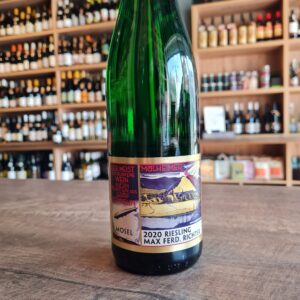 Max Ferdinand Richter winery produces this classic off-dry Mosel Riesling from the Mulheimer Sonnenlay vineyard. The bottle features a beautiful Art Deco label depicting the Zeppelin airships upon which this Riesling was served in the 1920's and 30's. "The Mülheimer Sonnenlay is the largest single Richter vineyard and the source of the world-renowned “Zeppelin” Riesling. The vineyard sits on the west-southwestern side of a slate stone hill south of Mülheim, a dry riverbed formed during the last ice age 250,000 years ago. The name of the vineyard– Sonne (sunshine) and lay (slate stone) –perfectly describes the characteristics of the site. This often extremely steep vineyard has a loose slate stone soil structure that is enriched by pebbles, loam and sand deposited by the ancient river. This kind of soil creates wines that combine typical slate stone mineral character with animated and elegant fruitiness." When possible, they utilize natural yeasts and eschew chemical fining agents. Max Ferdinand Richter’s 48 steep acres are spread out in the Middle Mosel Valley between Erden and Brauneberg. Plantings consist of 95% Riesling and 5% Pinot Blanc grapes. The average age of Richter vines is 40 years. "Wines from the Mülheimer Sonnenlay were served on the luxurious Zeppelin airships -including the Hindenburg - in the 1920s and 30s. Local growers, proud of this distinction, commissioned Bauhaus artist Hans Schlösser to design a label for the wine incorporating the iconic Zeppelin airship. The label is still featured today."
Max Ferdinand Richter winery produces this classic off-dry Mosel Riesling from the Mulheimer Sonnenlay vineyard. The bottle features a beautiful Art Deco label depicting the Zeppelin airships upon which this Riesling was served in the 1920's and 30's. "The Mülheimer Sonnenlay is the largest single Richter vineyard and the source of the world-renowned “Zeppelin” Riesling. The vineyard sits on the west-southwestern side of a slate stone hill south of Mülheim, a dry riverbed formed during the last ice age 250,000 years ago. The name of the vineyard– Sonne (sunshine) and lay (slate stone) –perfectly describes the characteristics of the site. This often extremely steep vineyard has a loose slate stone soil structure that is enriched by pebbles, loam and sand deposited by the ancient river. This kind of soil creates wines that combine typical slate stone mineral character with animated and elegant fruitiness." When possible, they utilize natural yeasts and eschew chemical fining agents. Max Ferdinand Richter’s 48 steep acres are spread out in the Middle Mosel Valley between Erden and Brauneberg. Plantings consist of 95% Riesling and 5% Pinot Blanc grapes. The average age of Richter vines is 40 years. "Wines from the Mülheimer Sonnenlay were served on the luxurious Zeppelin airships -including the Hindenburg - in the 1920s and 30s. Local growers, proud of this distinction, commissioned Bauhaus artist Hans Schlösser to design a label for the wine incorporating the iconic Zeppelin airship. The label is still featured today." -
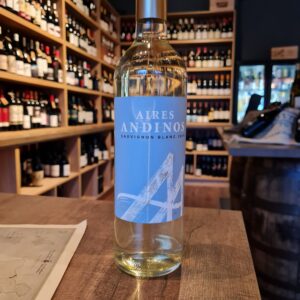 What a wonderfully crisp glass of white wine made from Sauvignon Blanc. The grape that you don't see much in Argentina but offers an excellent wine at the right height. Well, that is a must with this Aires Andinos Sauvignon Blanc, because the vineyards are at a very high altitude in Mendoza. This gives the vines a lot of cooling and that gives a unique taste to this white wine. The aires Andinos winery has invested a lot in recent years and we can taste that. The wines have become purer and riper and as a result have become intensely popular in Argentina. In the glass, this white Aires Andinos Sauvignon Blanc turns pale yellow with green hues. It smells of notes of freshly cut grass, citrus and of course some grapefruit. Just waltz with the glass and we also smell some green asparagus and bell pepper. In the mouth, this Sauvignon Blanc has a fresh feeling on the tongue with light acidity. Lots of fruitiness of apple, lime and grapefruit that lingers in the aftertaste.
What a wonderfully crisp glass of white wine made from Sauvignon Blanc. The grape that you don't see much in Argentina but offers an excellent wine at the right height. Well, that is a must with this Aires Andinos Sauvignon Blanc, because the vineyards are at a very high altitude in Mendoza. This gives the vines a lot of cooling and that gives a unique taste to this white wine. The aires Andinos winery has invested a lot in recent years and we can taste that. The wines have become purer and riper and as a result have become intensely popular in Argentina. In the glass, this white Aires Andinos Sauvignon Blanc turns pale yellow with green hues. It smells of notes of freshly cut grass, citrus and of course some grapefruit. Just waltz with the glass and we also smell some green asparagus and bell pepper. In the mouth, this Sauvignon Blanc has a fresh feeling on the tongue with light acidity. Lots of fruitiness of apple, lime and grapefruit that lingers in the aftertaste. -
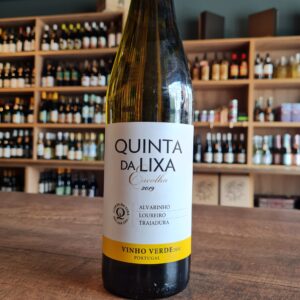 This wine is made from the noblest and best known Portuguese grape variety(Alvarinho), in a year of exceptional quality. The aroma is intense and very attractive, with flowery and fruity notes, and lemonade hints, in a combination of great character and fineness. Tropical fruit in the mouth, acidity fits nicely with the fruit. Long finish
This wine is made from the noblest and best known Portuguese grape variety(Alvarinho), in a year of exceptional quality. The aroma is intense and very attractive, with flowery and fruity notes, and lemonade hints, in a combination of great character and fineness. Tropical fruit in the mouth, acidity fits nicely with the fruit. Long finish -
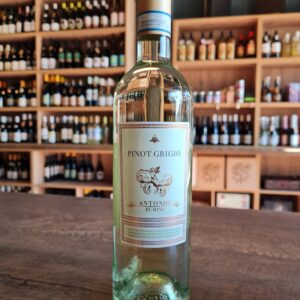 The Pinot Grigio grapes from this wine come from the Veneto (Pavia region, near Milan) region of Italy, where the Pinot Grigio grape has been cultivated for more than a century. The wine shows apple and pear with hints of white peach and elderflower. Light and refreshing, a mouth-watering partner for salads and seafood, great in the summer.
The Pinot Grigio grapes from this wine come from the Veneto (Pavia region, near Milan) region of Italy, where the Pinot Grigio grape has been cultivated for more than a century. The wine shows apple and pear with hints of white peach and elderflower. Light and refreshing, a mouth-watering partner for salads and seafood, great in the summer.


